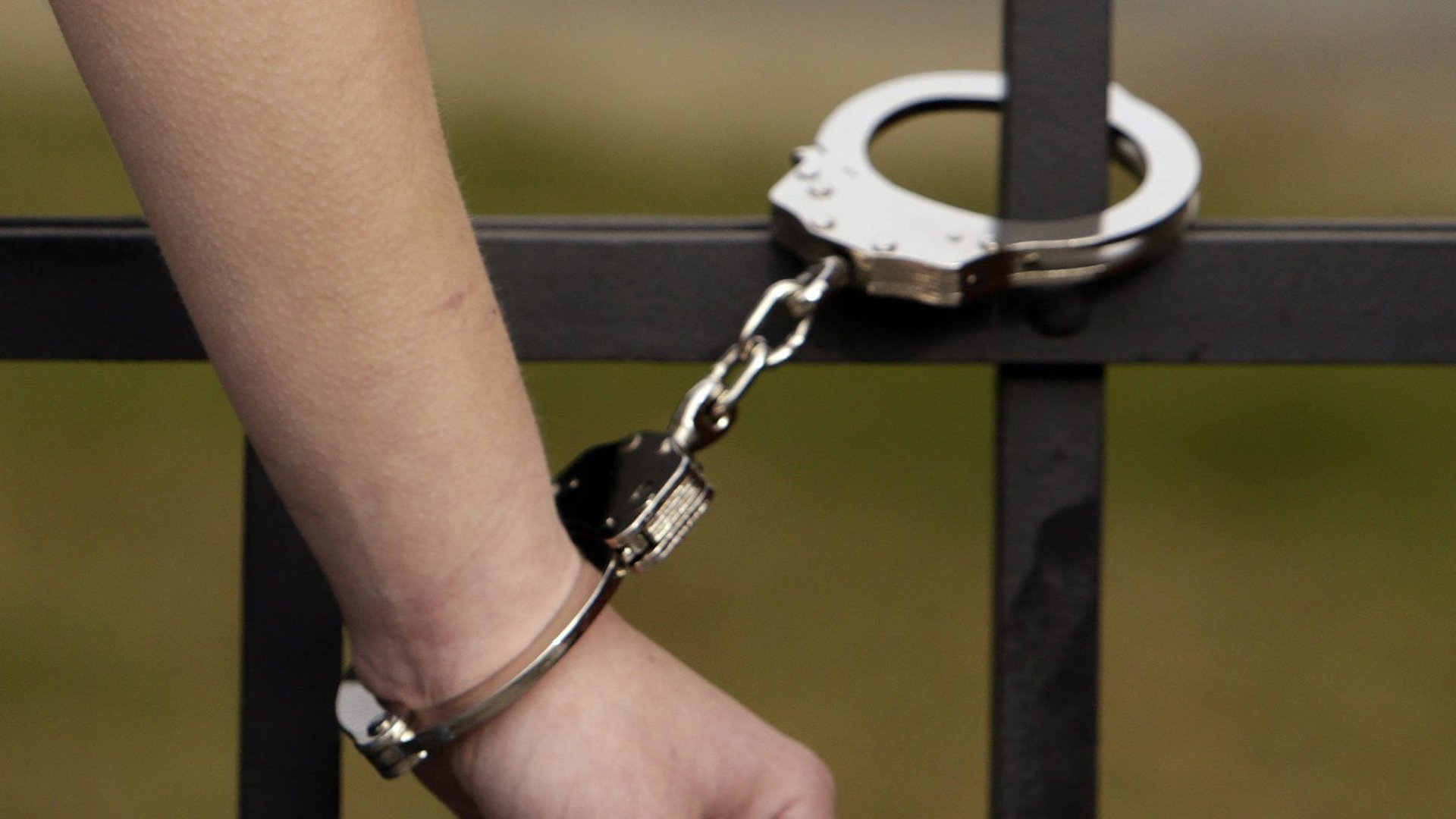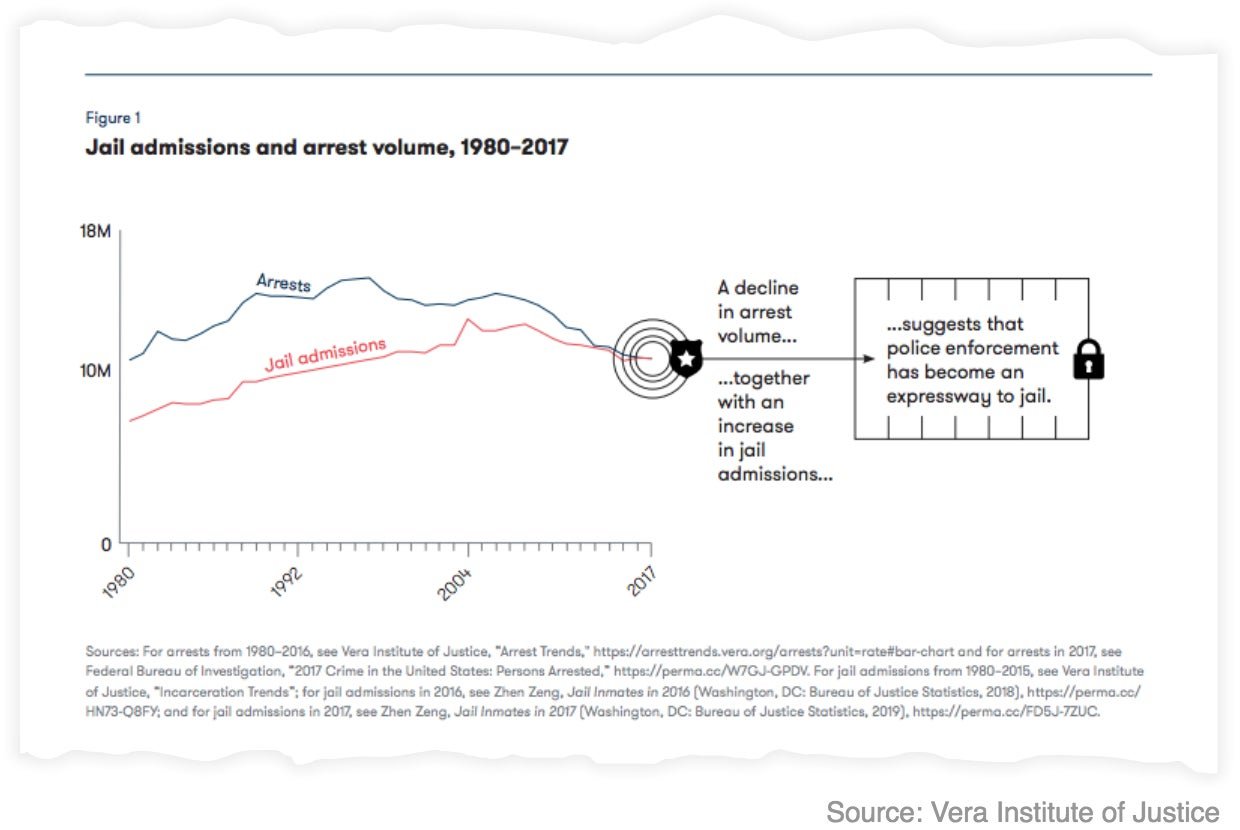You’re 30% more likely to go to jail than your parents were
With crime and arrest rates at historic lows, the overall ratio of jail admissions to arrests has gone up. A quarter-century ago, when crime and arrest volumes were high, there were 70 jail admissions for every 100 arrests. Nowadays, there are 99 jail admissions for every 100 arrests, an increase of nearly 30%. Not all jail admissions are the result of arrests, since things like parole violations can land a person in jail too, but the changing ratio means contact with law enforcement has become an “expressway to jail.” That’s the takeaway from a new study by the nonprofit Vera Institute of Justice (pdf), which found that in 1994, 30 out of every 100 arrests in the US ended with a citation or summons rather than “full custody.”


With crime and arrest rates at historic lows, the overall ratio of jail admissions to arrests has gone up. A quarter-century ago, when crime and arrest volumes were high, there were 70 jail admissions for every 100 arrests. Nowadays, there are 99 jail admissions for every 100 arrests, an increase of nearly 30%. Not all jail admissions are the result of arrests, since things like parole violations can land a person in jail too, but the changing ratio means contact with law enforcement has become an “expressway to jail.” That’s the takeaway from a new study by the nonprofit Vera Institute of Justice (pdf), which found that in 1994, 30 out of every 100 arrests in the US ended with a citation or summons rather than “full custody.”
The dramatic increase in jailing over less punitive approaches does not reflect a corresponding rise in violent crime. In fact, more than 80% of people arrested are taken in by cops on a minor violation, such as disorderly conduct or other nuisance offenses. At the same time, the percentage of all arrests for violent crimes has stayed constant, at less than 5%, for decades.
“Police officers, as gatekeepers of the criminal justice system, hold almost exclusive authority—by way of citations, arrests, and even physical force—to enforce and regulate the law,” says the study, titled Gatekeepers: The Role of Police in Ending Mass Incarceration. “And they have increasingly been asked to do this in situations that involve societal problems that would be better resolved in the community—problems like homelessness, mental illness, and substance use.”

Approximately 28,000 people are arrested each day in the US, or about 10.5 million annually. FBI data cited by Vera shows more than twice as many arrests in 2017 for things like public drunkenness and vagrancy (1.2 million) as there were for serious crimes including murder, rape, and robbery, and aggravated assault (518,617). On the local level, the ratios are nearly identical. In 2017, there were 88,000 felony arrests by the New York Police Department, compared to 179,000 arrests for misdemeanors—many of which the Vera study says were “deemed to be so trivial that the people arrested [weren’t] even fingerprinted.”
“In New York State…the list of offenses for which suspects need not be fingerprinted runs to more than 160 pages, including common arresting charges such as multiple forms of disorderly conduct, vagrancy, loitering, criminal trespass, and public intoxication,” it explains. “If a charge is not significant enough to trigger fingerprinting, it is reasonable to question whether the arrest itself is necessary.”
The New Orleans Police Department is singled out for cautious praise by Vera as “one among many law enforcement agencies that is relying more on citation and release than on custodial arrest in certain situations.” A city ordinance that requires officers to issue summonses instead of making an arrest for municipal violations like simple marijuana possession has drastically reduced the arrest rate while freeing up police resources for more serious matters.
Further, citations, which usually result in a fine, don’t generally touch off the same sort of damaging long-term effects that arrests normally have.
Spending even a short time in jail increases your chances of being found guilty, according to the Vera study. Further, an arrest record can lead to difficulties in finding a job and a place to live, or getting credit, even if the charges were dropped.
At the same time, Vera warns that increased reliance on citations could trigger a flood of tickets being issued for things a cop might have before ignored. (No research has yet been done to see if this is indeed happening.)
All of this has the biggest impact on people of color, Vera argues. Nationally, African-Americans make up 28% of all US arrests. Yet, they comprise just 13% of the American population.
“A new model is needed: one that rebuilds trust, maintains public safety, and reserves arrest as a last resort,” the study concludes, adding, “This will require hard work, patience, political will, and an enormous shift in worldview. Police leaders must give officers training, support, and incentives to forego punitive responses and problem-solve instead.”